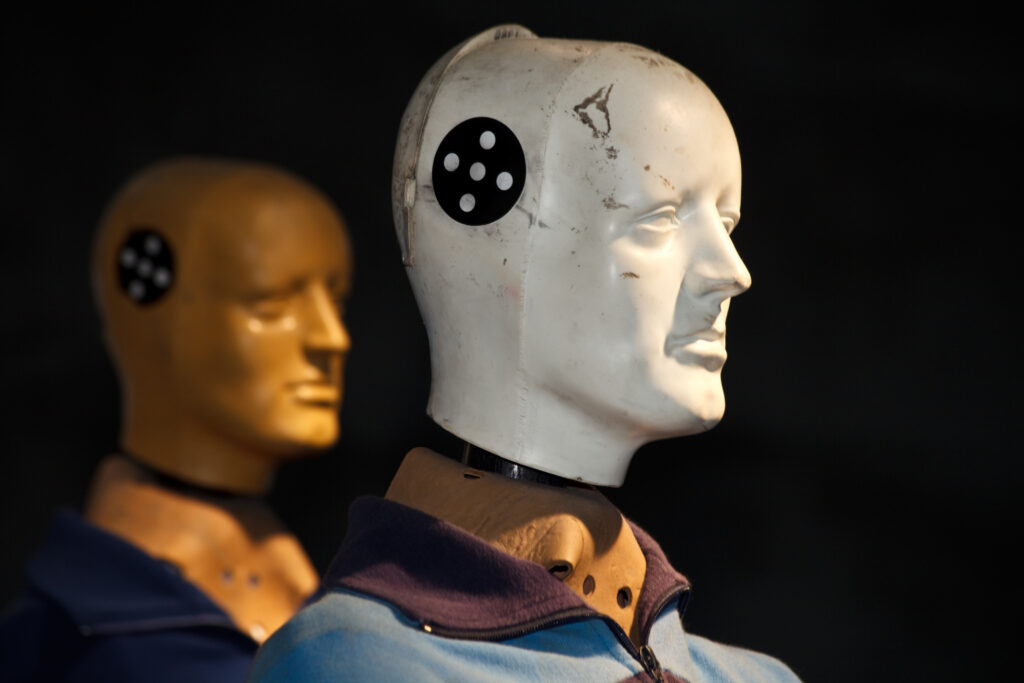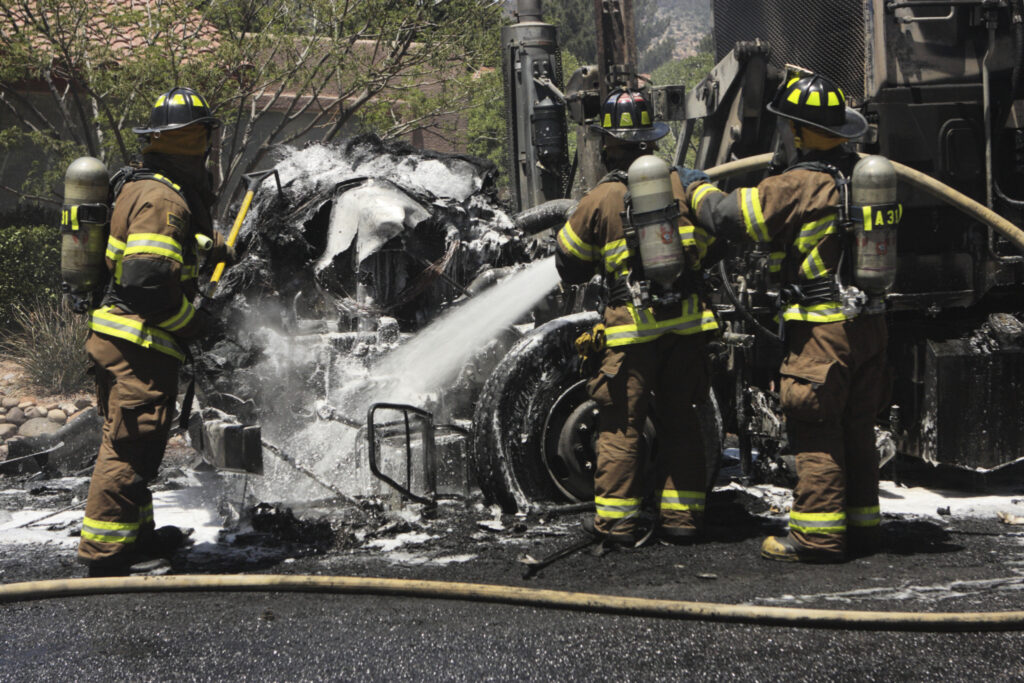Focus post-collision investigations on ‘why’ rather than ‘what happened’
It seems odd to hear Grant Aune say fleets can’t rely on police reports. The owner of Advantage Fleet Services spent 24 years as an RCMP officer, specializing as a collision reconstructionist. But it’s a message he believes trucking industry managers need to hear when it comes to post-collision investigations.
“If [any fleet manager] has the assumption that the police, or the coroner, or the insurance company, or workers’ compensation will look after their interests, he has to give his head a shake,” Aune says.
Each stakeholder will focus on collecting the crash details to address specific needs. Once those needs are met, the investigations stop.

Consider a fatal single-truck collision as an example. “The police investigation will be short,” he explains. “You can’t charge a dead person.” Coroners want to know if a death was accidental. Insurers need to identify liability. Workers’ compensation teams address compliance matters.
“The fleet investigation is the most important one,” Aune says of the process required under the National Safety Code (NSC). “That’s the only group that cares about the ‘why.’”
And the answers to that question ultimately point to the root causes a fleet can correct to prevent future collisions.
The root cause
It involves following a thread of information to its true origin. A driver may admit they ran off the road because they were tired, but why was this the case? Was there ongoing pressure to complete a load? Maybe a specific route was especially grueling. Were they able to find suitable parking for off-duty time? Perhaps medical issues such as sleep apnea contributed to poor sleep patterns.
Rick Geller of GL Transport Consulting recalls looking into a collision near Carberry, Manitoba, where an eastbound truck pulling a set of A trains drifted off the TransCanada highway, rolled across a wide median, and ultimately ended up in a ditch on the north side of the westbound lanes. No other vehicles were involved. It demonstrated every hallmark of driver fatigue.
Fleet records reinforced the fact. The driver picked up the A trains in Calgary every Saturday at 3:30 am, dropped the trailers in Winnipeg, picked up a preloaded trailer, and began the return journey before parking at a tourist information area on the Manitoba border. “You couldn’t do that run in your car in 13 hours of drive time,” Geller says.
“Nobody in the operations area ever disciplined him for being over hours.”
– Rick Geller, GL Transport Consulting
But he ultimately pointed his finger at the operations team when looking at the root cause.
“It identified a company issue, too. Nobody in the operations area ever disciplined him for being over hours. As long as he kept it on the road, he was a ‘good driver.’”
The goal of a post-collision investigation, after all, is to identify the underlying practices that contribute to an issue. This can help fleets refine dispatching practice, trip planning, driver training, and equipment configurations alike.
It can even resolve seemingly minor problems that lead to recurring headaches.
Aune, for example, remembers a fleet that discovered four backing incidents could be traced to a single barrier in one shipper’s yard. “The steel post was in the stupidest place you could ever imagine,” he says. It didn’t take much to convince the shipper to remove the post that had simply been overlooked when the yard was reconfigured.
The backing-related damage came to an end.

Collecting evidence
Much of an investigation’s all-important evidence will be collected before police record the first letters on their own reports.
“There’s things that a driver can do and evidence that a driver can collect that nobody will get,” Aune says. They’ll have a chance to take photos at the scene before wreckage is towed and skid marks fade.
“Evidence gets contaminated. It gets moved. It gets destroyed,” he warns, referring to the initial race against the clock. “There’s no way you can get it back.”
The process also involves focusing on the right things. Pictures of vehicle damage can be taken well after the fact. But photos of details leading up to any wreckage – such as skid marks, gouged pavement, and roads leading in each direction up to the crash scene – help to show what really occurred.
Telematics data that tracks speeds and brake applications will fill in more blanks. “Once I have a speed, then I can work that vehicle back in time,” Aune says. This will help identify where the driver first perceived any related risk.
“Once I have speed, then I can work that vehicle back in time.”
– Grant Aune, Advantage Fleet Services
If any injuries were involved, he also likes fleets to order independent vehicle inspections, largely to keep personal injury lawyers from painting a picture of events to fit a narrative they want to establish. “You need to do that mechanical inspection to eliminate those red herrings down the road.”
Then it’s a matter of digging into fleet files. Pre-trip and post-trip inspection reports in the days leading up to the collision help identify commitments to fleet policies as clearly as Hours of Service data.
But Geller stresses the need to let all the data tell the story, rather than jumping to conclusions: “What is it that you’re trying to determine from that crash? If it’s simply another thing that will scapegoat drivers, then what you’re doing right now is probably sufficient. But what is the right problem that needs to be solved? Is it a driver problem or a company problem?
“It’s an easy trap to fall into,” he admits. “We form some kind of conclusion before we start looking into it, and now we’re only considering the evidence that supports the conclusion.”
Getting to the why
Driver interviews complete the picture, and represent the first real opportunity to establish some context. A safety committee including fellow drivers and supervisors can come together and begin to ask why things occurred.
The answer doesn’t always emerge right away. There have been situations when Aune has come back to the question dozens of times. But this will ultimately identify strategies which ensure similar crashes don’t happen in the future.
“We need to stop just monitoring the outcome of the crash and reacting to it. That’s typically what happens in the aftermath of a crash,” Geller says. In other words, “do I have a driver problem, or do I have a company problem?”
While fleets fill binders with policies and documents to demonstrate compliance, many fail to test the processes to see if they actually work, he says. It’s all too easy for people to establish personal shortcuts without considering what might happen further downstream.
The broader files could even point to unrelated issues that should be resolved first.
Geller refers to a large carrier that approached him with a concern about rollovers as an example. Digging into five years of data, he discovered a much larger issue – amounting to 46% of collision-related costs. The fleet’s own trucks were colliding with one another at an alarming rate, and usually within two miles of the terminal. After a few interviews, it became clear that a first-in-first-out dispatching model had to change.
“They created this road race and people were crashing and banging into each other trying to get into the yard first,” he says.
It’s always a matter of focusing attention on the right issues. Geller likens it to someone coming across a dead fish in a lake. They’ll scrutinize everything that’s wrong with the fish. But only once they come across many dead fish will they turn their attention to the lake and the contaminated groundwater that’s killing them in the first place.
Have your say
This is a moderated forum. Comments will no longer be published unless they are accompanied by a first and last name and a verifiable email address. (Today's Trucking will not publish or share the email address.) Profane language and content deemed to be libelous, racist, or threatening in nature will not be published under any circumstances.
Good information John. Why is the real information. Very enlightening